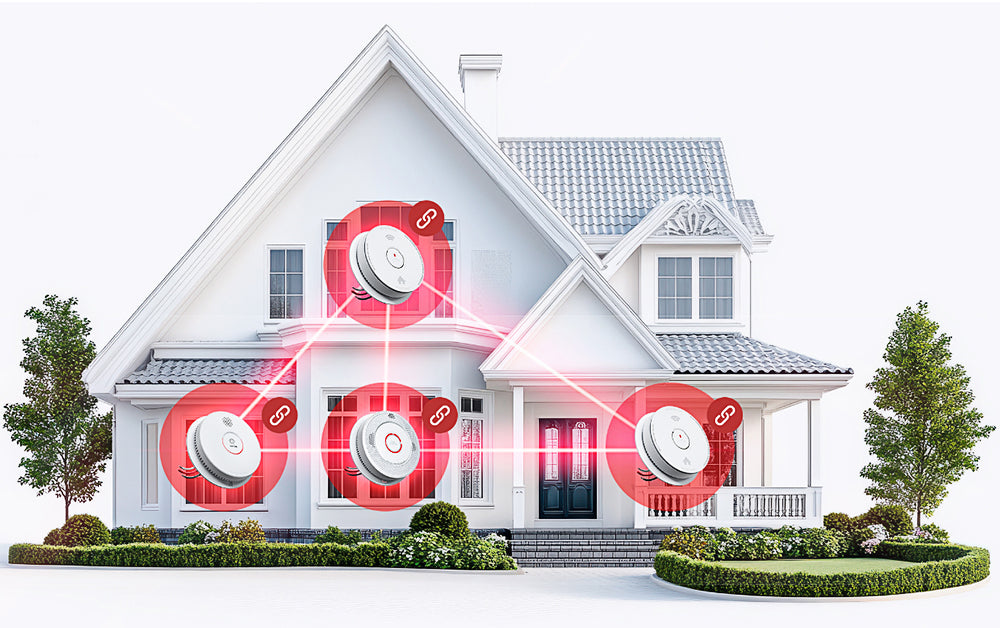Imagine a fire starts in your basement while your family sleeps upstairs. Without interconnected alarms, only those nearby would hear it—losing precious minutes could be fatal. Interconnected alarms alert everyone instantly, giving you time to grab essentials, evacuate safely, or close off rooms to slow the spread.
Understanding the Risk: Fires Don’t Wait
According to the National Fire Protection Association (NFPA), nearly 60% of fire deaths in the U.S. occur in homes without adequate alarm coverage. Even when fire starts in a small, seemingly contained area, the danger can spread quickly. Traditional standalone alarms may not give everyone in the house enough warning—particularly those asleep or on a different floor. Interconnected alarms solve this problem by creating a network of early alerts throughout the home.

How Siterwell Interconnected Alarms Work
1. Hardwired Systems: Smoke and CO alarms connected to the same electrical circuit automatically form a wired network. When one unit detects smoke, all devices in the system activate instantly.
2. Wireless Interconnection: Wireless devices can be linked together and can also join an existing hardwired network.
3. Maximum Connectivity: A system can connect up to 18 devices—typically 12 smoke alarms and 6 non-smoke alarms.
Step-by-Step Setup of Siterwell Wireless Interconnected Alarms
1. Primary & Secondary Devices:
- Choose one device as the primary. Press the TEST/SILENCE button three times. The green LED flashes rapidly with a voice prompt.
- On each secondary device, press the TEST button three times. If the green LED lights for 3 seconds with a voice prompt, the interconnection is successful.
2. Troubleshooting:
- Yellow LED flashing 15 times + voice prompt = pairing failed. Retry until successful.
- Once set, long-pressing any alarm’s test button will trigger all alarms.
3. Exiting the Network:
- Press the TEST button 5 times within 3 seconds. The green LED flashes slowly. Press again to confirm exit.
- Even if the primary device exits, other devices remain interconnected—repeat to remove all devices as needed.
4. Merging Systems:
- You can link a hardwired system to a wireless one by selecting one device from each system and performing the above interconnection.
- Limitations: Only one device in a hardwired system can participate in wireless linking, and two independent wireless systems cannot interconnect directly.

Practical Tips for Maximum Protection
1. Plan Before Installation: Link alarms before mounting them for seamless coverage.
2. Test Regularly: Monthly testing ensures your network responds as expected.
3. Strategic Placement: Near bedrooms and stairways to maximize coverage, while avoiding areas close to HVAC vents or intakes. For more detailed placement instructions, check the Siterwell instruction manual.

Beyond Compliance: Continuous Peace of Mind
Interconnected smoke alarms—whether wireless, hardwired, or a combination—serve more than just compliance purposes. They create a network of protection, alerting your family immediately to any danger. With proper setup, regular testing, and strategic placement, Siterwell alarms give you peace of mind, turning your home into a proactive safety zone rather than a reactive one.
Explore Siterwell interconnected smoke alarms and ensure your home is fully protected today.



